The Birmingham firm of W&C (William & Charles) Scott was a prolific maker of guns sold by others in Britian They are not especially well-known in their home country as makers of best quality guns and rifles.
The practice of having a big manufacturere like W&C Scott make a gun to order for a third parrty, whose name would be put on the locks and whose address would be engraved on the rib was commonplace. Most customers would not know from whence their gun came.
The customer would walk into his London (or provincial) gun shop and order a gun or rifle. He might buy one off the shelf, which had already been made. He may even pause to wonder why a gun bought from Holland & Holland might look very similar to one his friend owned, which had been purchased from Frederick Baker but might assume that all these makers were just making use of what they considered the best available design.
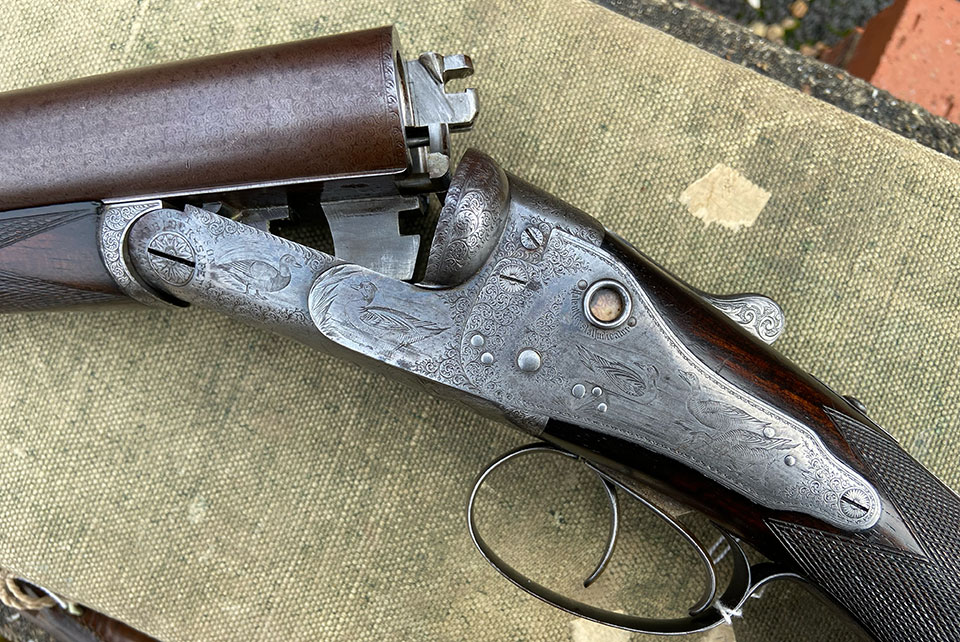
In fact, both guns might have originated in Birmingham and been sent to London from the benches of W&C Scott's craftsmen. Perusing any auction catalogue today and, with practice, it is possible to observe the work of Scott on all manner of guns by most makers in the country.
This gun, however, does bear the name of the actual maker, W& C Scott, though it carries the London address of their retail shop, rather than that of the Birmingham factory. This practice was not uncommon. Westley Richards was another high classs Birmingham gunmaker with a long-standing shop or agency in London, where a better class of customer could usually be found.
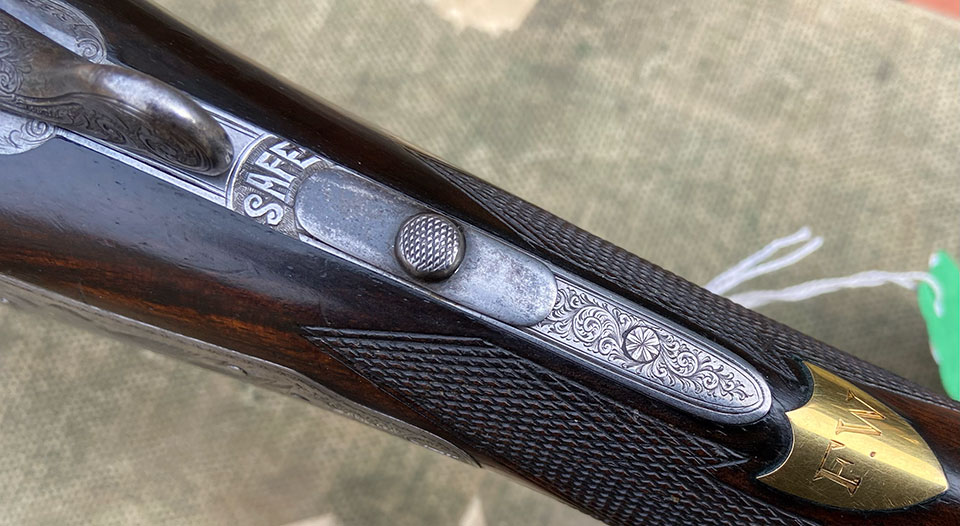
This particular gun is a 10-bore with 2 7/8" chambers and 32" Damascus barels, choked 3/4 in both. It was probably made for wildfowling, rather than live pigeon shooting, if the engraving serves as a clue. It dates from around 1887.
The action is one Scott used a great deal and it can be seen on the wares of a large number of other gunmakers in the late 19th century. It is a back-action lock gun, with distinctive crystal windows which show the interlnal (gold wshed) hammers 'at cock'.
It was patented by Scott & Baker in 1878 and given patent No.7651. It features a treble-grip locking system, which Scott called the 'Triplex Grip', consisting of an under-bolt and bolted doll's head rib extension.

Gunmakers at this time were rather fond of writing details on their guns extolling their clever inventions and patent protected features. These can be found in several places on this gun.
It has an automatic block safety and this is announced in engraving around the cross pin. This was an extra fail-safe which stopped the hammer reaching the striker if the sear was jarred out of the bent. Most hammerless guns relied on a trigger-lock only when the saftey catch was engaged. In addition, it has Needham & Hinton patent intercepting sears (No.706 of 1879).
Around the crystal windows, the engraving states 'Patent Crystal Indicator' in nice gothic script. The actual patent for the indicator is No.3223 of 1875.
Gas checks were once considered useful, they allow gasses from ignition to escape without blowing back into the action in the case of a perforated primer. Scott patented a gas check, No.617 of 1882) which is a narrow groove which circumnavigates the striker holes and then exits the face of the action at a right angle providing an easy channel for escaping gasses to follow.
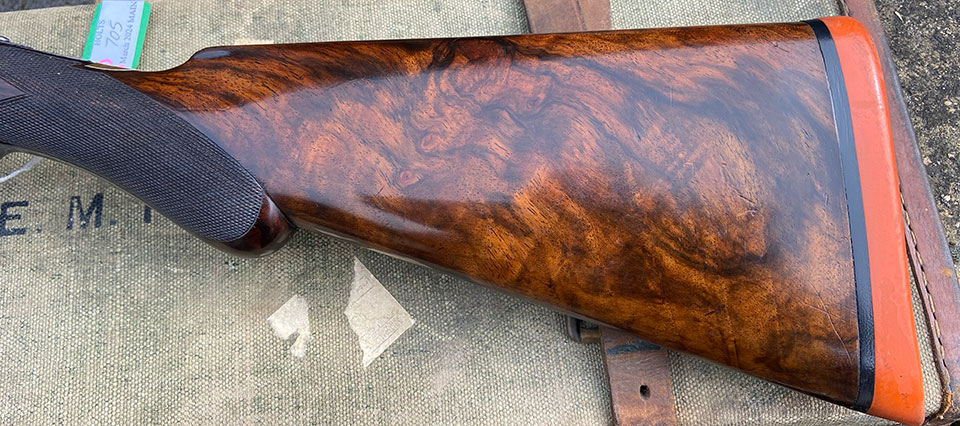
The forend is released by another Scott patent; the key release patent No.3756 of 1873.
All these mechanical features are fasinating examples of the clever inventions Victorian gunmakers were incorporating into hammerless guns during the late 19th century. Their motivation was both the search for the perfect solution to any percieved problem and also to create a system that performed the same duty as an existing one but differed sufficiently so as to avoid a patent infringement.
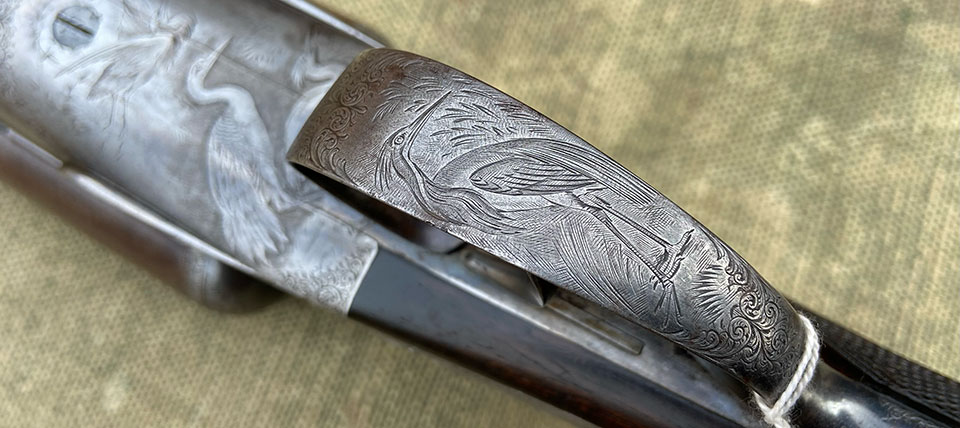
The Scott & Baker action creates an attractive gun, with a strong and reliable mechanism. It was poular for about thirty years and many makers made use of it. It was made in many grades of finish and some London makers (like Holland & Holland) favoured fairly plain grades and sold them as their second and third quality options.
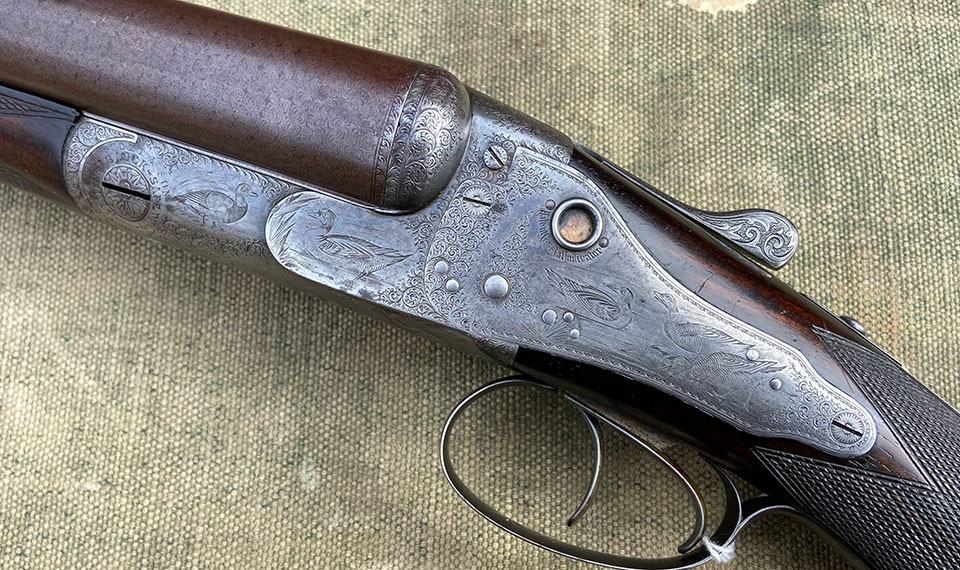
W&C Scott, however, offered several very highly finished options of most of their models. This is the 'Premiere Quality' and features distinctive and beautiful engraving of curlew, crested grebe, Canada geese, barnacle geese, tufted duck and herons. The fine Damascus barrels have a smooth, concave rib engraved 'W&C Scott & Son. Patent Triplex Lever Grip. 'The Premiere Quality' 10 Gt. Castle Street. Regent Circus. London.'
The Premier Quality (Premiere' on this gun is an unusual spelling) Scott & Baker model was sold from 1878 to 1888, when it was replaced by a bar-action sidelock with a different treble-grip system. This is a particularly good and un-restored example of what was an expensive gun in its day, costing around £65.
Published by Vintage Guns Ltd on (modified )




